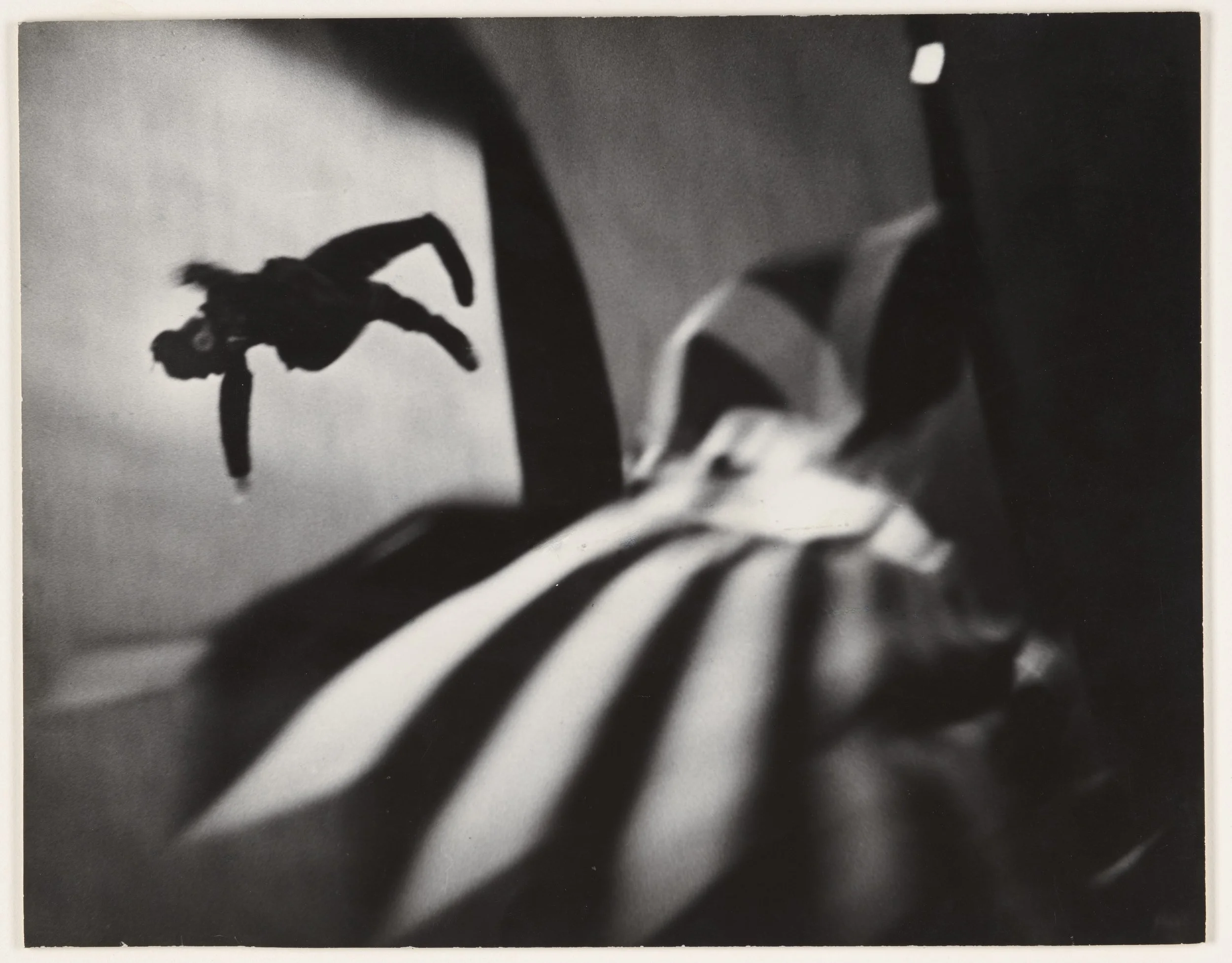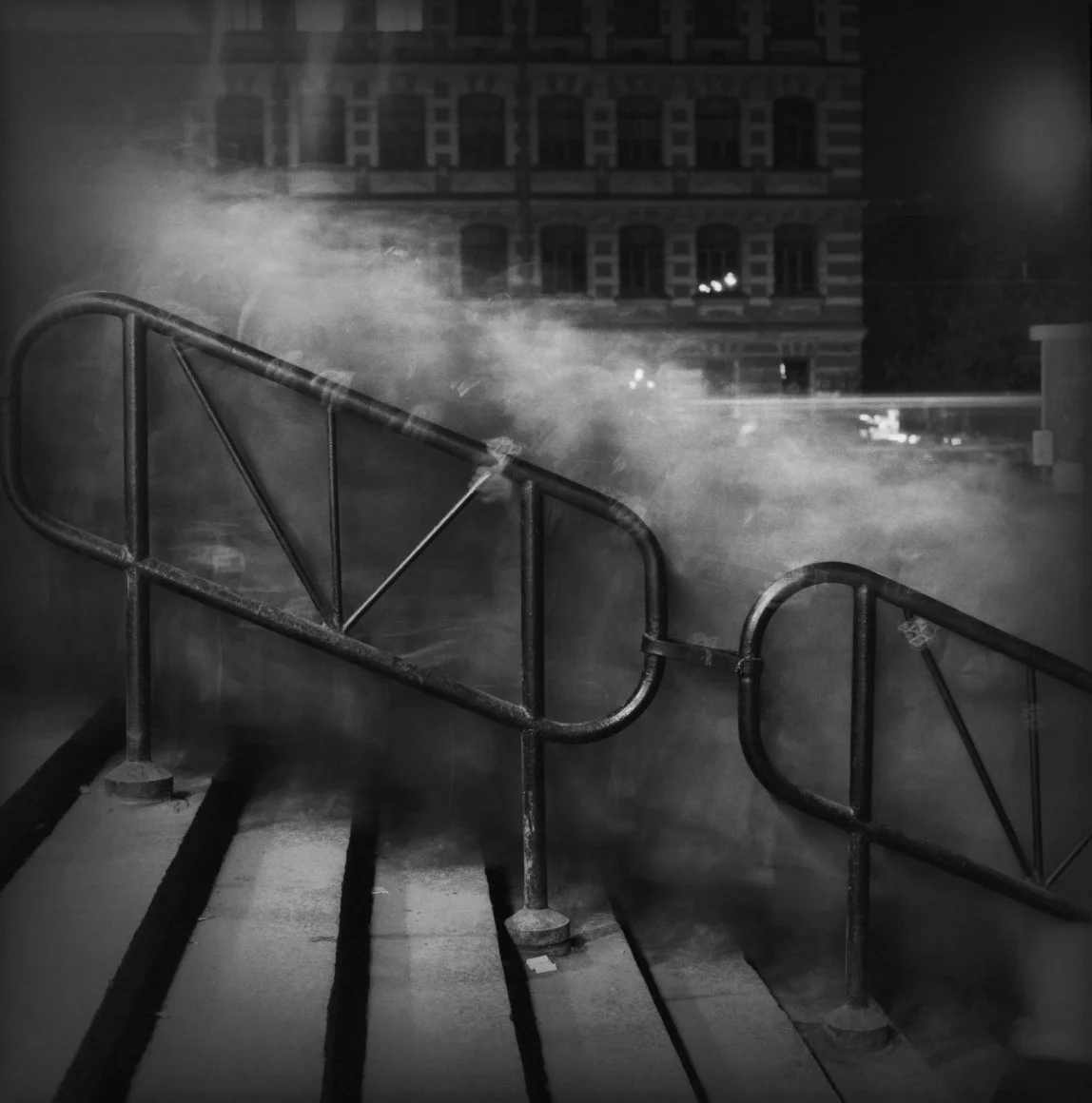Alexey Brodovitch: Astonish Me | The Barnes Foundation
Alexey Brodovitch reviewing page layouts for Richard Avedon’s Observations, 1959. Photo by Hiro. © 2024 Estate of Y. Hiro Wakabayashi
Written by Trip Avis
Alexey Brodovitch may not be a household name for many laymen, but he was an artist’s artist. His life's work inspired his peers and left a profound mark on photography and art direction. Brodovitch is particularly close to the heart of Musée: our founder and editor-in-chief, Andrea Blanch, was noticed by her mentor, Richard Avedon, due to a fond association between the two having the same initials. Brodovitch was a cultural cornerstone, serving as art director of Harper’s Bazaar for over two decades between the mid-1930s and late-1950s. During his tenure, he shook up the staid, elegant fashion publication with surrealistic and avant-garde notions while establishing photography as an enduring facet of the magazine’s design.
Outside of Harper’s, Brodovitch inspired iconic photographers like Avedon, Eve Arnold, and Irving Penn with his individuality and discerning eye. According to the exhibition’s curator, Katy Wan, “Brodovitch was regarded by his peers as the father of modern art direction.” The Barnes Foundation in Philadelphia displays Alexey Brodovitch: Astonish Me between March 3rd and May 19th, 2024. It is the first major museum exhibition in the United States to celebrate the work of this overlooked but undeniably influential figure, shedding light on his mythos in the art world while introducing his work to a larger audience.
Harper’s Bazaar, January 1936. Collection of Vince Aletti. Harper’s Bazaar, Hearst Magazine Media, Inc.
As an artist, Alexey Brodovitch donned multiple hats—art director, designer, and mentor—a testament to his influence's wide-reaching and fluid nature. A photographer in his own right, Brodovitch’s experience in art direction and photography informed each other, giving him a deep and rounded understanding of how to capture an astonishing photograph. His mastery of the beguiling viewers is readily apparent through his mentor-mentee relationship with Richard Avedon. In a wonderfully intimate image captured by the Japanese-American photographer Hiro, we see Brodovitch organizing the page layout of Richard Avedon’s 1959 Observations, a coffee table book co-written with Truman Capote and designed by Brodovitch. The photographs line the bare floor of the studio in long, neat rows; Brodovitch applies his talented eye to conjuring a cohesive flow from the lines of images. It is a testament to the trust placed in him by greats like Avedon, who recognized the power of his vision.
Brodovitch’s challenge to ‘astonish’ viewers is apparent in images like Avedon’s Dovima with Elephants, Evening Dress by Dior, Cirque d’Hiver, Paris (1955). An ethereal black swan posed between powerful beasts, the model Dovima exudes graceful defiance with an air of whimsy. A theatrical, almost camp element counterbalances the elegance. It begs the question: what is this fashionable lady doing with two elephants? There is an absurdity to the scene that borders on surrealism, a further nod to Brodovitch’s influence. The peculiar pairing is perhaps a stroke of advertising genius—it stops the eye (and mind) in its tracks.
Alexey Brodovitch. The Sylphs (Les Sylphides), 1935-37. Art Institute of Chicago. Purchased with funds provided by Karen and Jim Frank. Photo Credit: The Art Institute of Chicago / Art Resource, NY
There is a lively immediacy in Brodovitch’s photography—a feeling of life in media res—as evidenced by images like Les Sylphides (1935-37). In this immediacy comes a transformation, a detachment from reality. The ballerinas’ tutus fan out like ghostly cyclones; the blur of movement provides a gauzy haze. As the name suggests, sylph—air spirit—the act of movement transforms the ballet dancers into wraiths, untethered to the concrete world and the stage beneath them. Through this transformation, Les Sylphides becomes less about capturing the dancers themselves but rather something more elusive—the frenetic atmosphere in which they lose themselves to the act of dance.
Alexey Brodovitch Les Noces (The Wedding), 1930s. Philadelphia Museum of Art. From the Collection of Dorothy Norman, 1968. Image courtesy of Philadelphia Museum of Art
In Les Noces (1935-37), Brodovitch continues the motifs of dance and transformation through motion found in many of his photographic efforts. Brodovitch trades the spectral glow of pirouetting ballerinas for the stark contrast of dancers clad in flowing white shirts and black breeches. While the dancers of Les Sylphides floated against the blackened backdrop of theimage, the leaping dancers in Les Noces meld into the void of black, their breeches indiscernible from the inky gloom of stage left. The spread arms of one of the dancers, blurred by the motion, is ornithic, resembling a white wingspan. Perhaps the most eye-catching is the lone dancer on the far left: their lack of movement reveals details, their billowing shirt folds are visible, and each white stocking is discernable against the curtain. Brodovitch injects the stillness of photography with invigoration. One can feel the exertions of each dancer’s leap.
Alexey Brodovitch’s artistic vision held such liveliness that other artists in his presence could not help but feel inspired by the glow. In Astonish Me, he asked them only what he would give himself: astonishing images that capture human life's feverish and animated energy. In this exciting new exhibition, Brodovitch legacy will continue to inspire joie de vie in the artistic hearts of all of us.
Alexey Bordovitch Tricorne, 1935. Philadelphia Museum of Art. From the Collection of Dorothy Norman, 1968. Image courtesy of Philadelphia Museum of Art.












